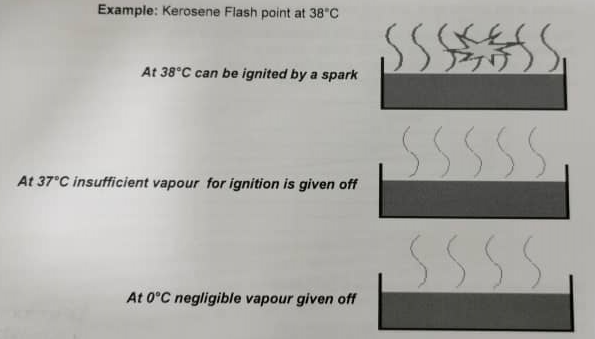Flash points are normally associated with flammable materials in the liquid phase. By definition, flash point is ‘the lowest temperature at which a material gives off sufficient vapour to form an explosive atmosphere, when tested in a specified test apparatus. This explosive atmosphere can be ignited by an arc, spark or naked flame. Typical examples are given below.
| Fuel Name | Flash point °C |
| Benzene | -11 |
| Acetone | -20 |
| Carbon disulphide | -30 |
| Diethyl ether | -45 |
| Gasoline | -46 |
| Parafin (Kerosene) | 38 |
The flash point of a material gives an indication of how readily that material will ignite in normal ambient temperatures. Different materials have different flash points – most are well below 0°C, but some are well above.
Material with high flash points should not be overlooked as a potential hazard since exposure to hot surfaces can allow a flammable mixture to form locally.
If a flammable material is discharged under pressure from a jet, its flash point may be reduced.





